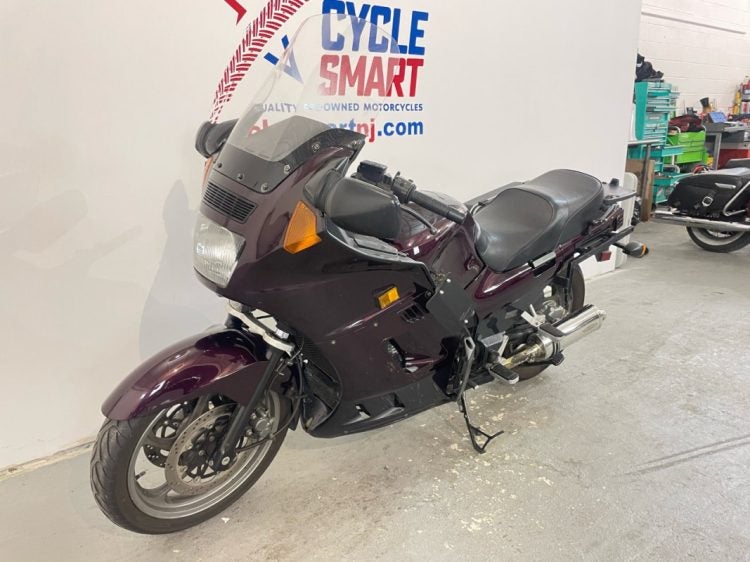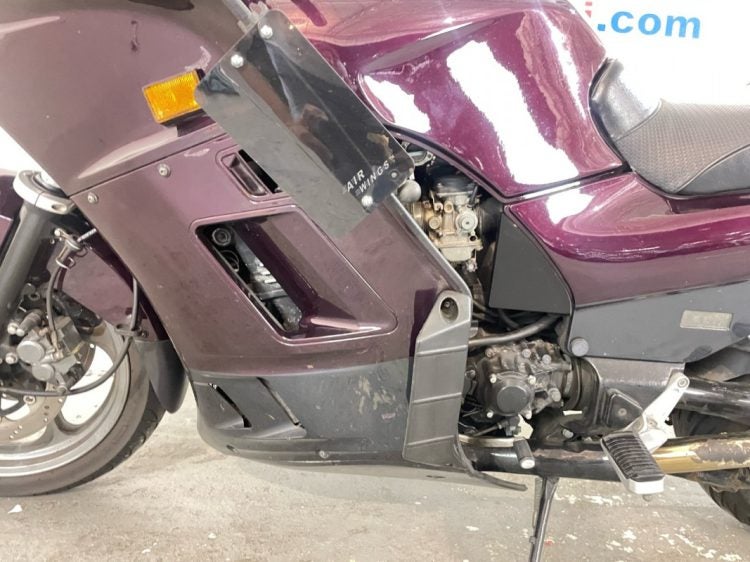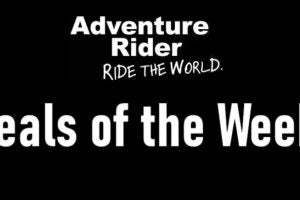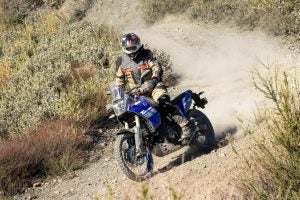Every motorcyclist has, I think, a machine that they “want a go on.” Maybe it’s a Suzuki Hayabusa, or a KTM 950 Super Enduro, or a Boss Hoss—something powerful, and exciting.
There’s a bike I’ve wanted to try out for years, but not because it’s exciting. Just the opposite, it looks highly practical and I suspect it might even be a bit boring by modern standards—but I’d really, really like a go on a Kawasaki Concours ZG1000, because it’s such an interesting hybrid of Euro and Japanese design.
Moto mash-up
The Concours ZG1000 came to market in 1986 as a transmogrification of the GPZ1000 superbike into a sport tourer. Well, more of a tourer, with a sportyish engine—but as always happens when Japan adapts a superbike powerplant towards practical ends, Kawasaki detuned it. The liquid-cooled DOHC 997 cc inline four, with four-valve heads, got smaller carbs and new cams. This reduced horsepower from a claimed 124 hp at 9,500 rpm to 110 hp at 9,500 rpm. However, the Concours got more torque in exchange for those lost ponies, rising from the GPZ’s claimed 66 lb-ft at 7,000 rpm to a more beefy 72 lb-ft of torque at 6,500 rpm. Tourers would appreciate the change, even if horsepower junkies didn’t.

Is the left-hand saddlebag gone? Looks so. But a replacement should be easily sussed out from a junker, or eBay, or Facebook Marketplace. Photo: Cycle Smart NJ
So you had a repurposed superbike engine—cool, cool. But what Kawasaki did with the rest of the bike was what set this machine apart. Instead of building yet another bloated mega-tourer in the vein of the Honda Gold Wing, the Suzuki Cavalcade, the Yamaha Venture or even Kawasaki’s own Voyager—Kawi instead built a Euro-style machine.
The clever chaps in the engineering department converted the four-cylinder engine to a shaft final drive. Yes, it sapped more power, but it was what long-distance riders wanted, as BMW had proven! And then they added a sporty fairing, instead of the full-coverage monstrosities descended from the Windjammer, and a set of minimalist sidebags instead of a full three-piece hard luggage set. The sidebags looked like they’d been pinched off a Beemer, and bolted to the Kawasaki.
To top it all off, Kawasaki gave the Concours a massive fuel tank, at 7.5 gallon capacity (28 liters). Load it up, and the bike weighed 671.5 lb wet. Hope you didn’t skip leg day…
The KLR of touring bikes
In the first year or two of production, the ZG1000 engine had issues with soft camshafts, and some owners might have worried they’d bought a bike with a limited lifespan and a short stay in production. They need not have worried. Kawasaki kept the ZG1000 in the lineup all the way through 2006, a 20-year run as the company’s fastest touring bike. It only saw one major update in that time period, in 1994.
Why did it last so long? You could argue that the Concours was the touring equivalent to the KLR650. It didn’t do anything particularly well, but it did well enough at a lot of things. That brought buyers who wanted a versatile, low-maintenance bike, a machine that could commute (with infrequent fill-ups, an often-overlooked bonus on a commuter bike) while also stretching its legs to the next county over, or the next country over, on the weekend. While it was obviously not a superbike, it was sporty-looking, with enough muscle to show its heels to much of the competition throughout its run.

Much different lines than the Gold Wing, very European and a bit sporty. But the Kawasaki Concours still had a massive fairing, and offers lots of protection from the elements. Photo; Cycle Smart NJ
And it was cheap, like the KLR. Although MSRPs obviously fluctuated through its run, the Concours generally held a much lower price tag than competing machines from BMW, while offering similar reliability and capability, not to mention a dealership network that was very strong in the US, even in poorer areas that might not support a BMW shop. That’s another often-overlooked benefit of a Japanese bike.
Despite all this, the Concours never achieved the popularity of the Gold Wing or the reputation of competing BMW RT or RS models. Why? Maybe because it lacked the electrical output to power all the lighting and heated gear needed for Iron Butt runs and the like—in the days before LEDs, this was an important consideration. Or maybe it was because Kawasaki has often been seen as a less-prestigious brand to own (unfair, but definitely an attitude I’ve encountered). Or maybe it was just because people wanted lower seat height or a lighter bike.
Whatever the case, the Concours is a cult bike at this point, with lots on the roads, but no real demand for them.

The fairing would complicate routine engine maintenance a bit, as you could expect the plastics to be getting brittle at this point in their life. Still, take your time and you should be OK. Photo: Cycle Smart NJ
The Concours in 2023
That makes the Concours an interesting buy in 2023, as the boomers who bought these machines age out of motorcycling. I rarely saw these bikes for sale a decade ago; now, they’re very common, often at prices of $3,000 or less, in relatively good mechanical condition.
There are many other excellent and fast bikes from the 1990s and 2000s you can get for that kind of money—a Suzuki Bandit, a Honda 919, a Yamaha FZ. They’re better bikes in many ways. But except for the Gold Wing, none of those big multi-cylinder machines offer the same out-of-the-box touring capability as the Concours. It comes with sidebags, a big fairing, and a big gas tank. Whether you want to see Key West, San Diego or Deadhorse, all you need to do is fill that tank up and go.
“But-but-but it’s not an adventure bike,” some of you might say. Sure, it lacks long-travel suspension and a “beak.” But tune into the video from Rick Fox below, and you can see him ride his Kawasaki Concours around the Trans Labrador Highway long before the route was all paved.
Rick also has a video of his trip to Alaska aboard the Concours here, if you’re still a doubter.
Admittedly, other machines will do the job better, especially in 2023, with parts supply getting more complicated. But as Nick Adams said in his column long ago, ADV riding is not about the machine, it’s about the adventure.
So if you’re skint, but you still want a bike that can do long miles? The bike seen in the photos above is a 1999 model, for sale at Cycle Smart NJ for $2,495, or best offer. Find their advert here. And if one of you buys it, can I please borrow it for a few days? For years now, I’ve wanted to take one of these touring, to see if it’s as practical as it looks.







